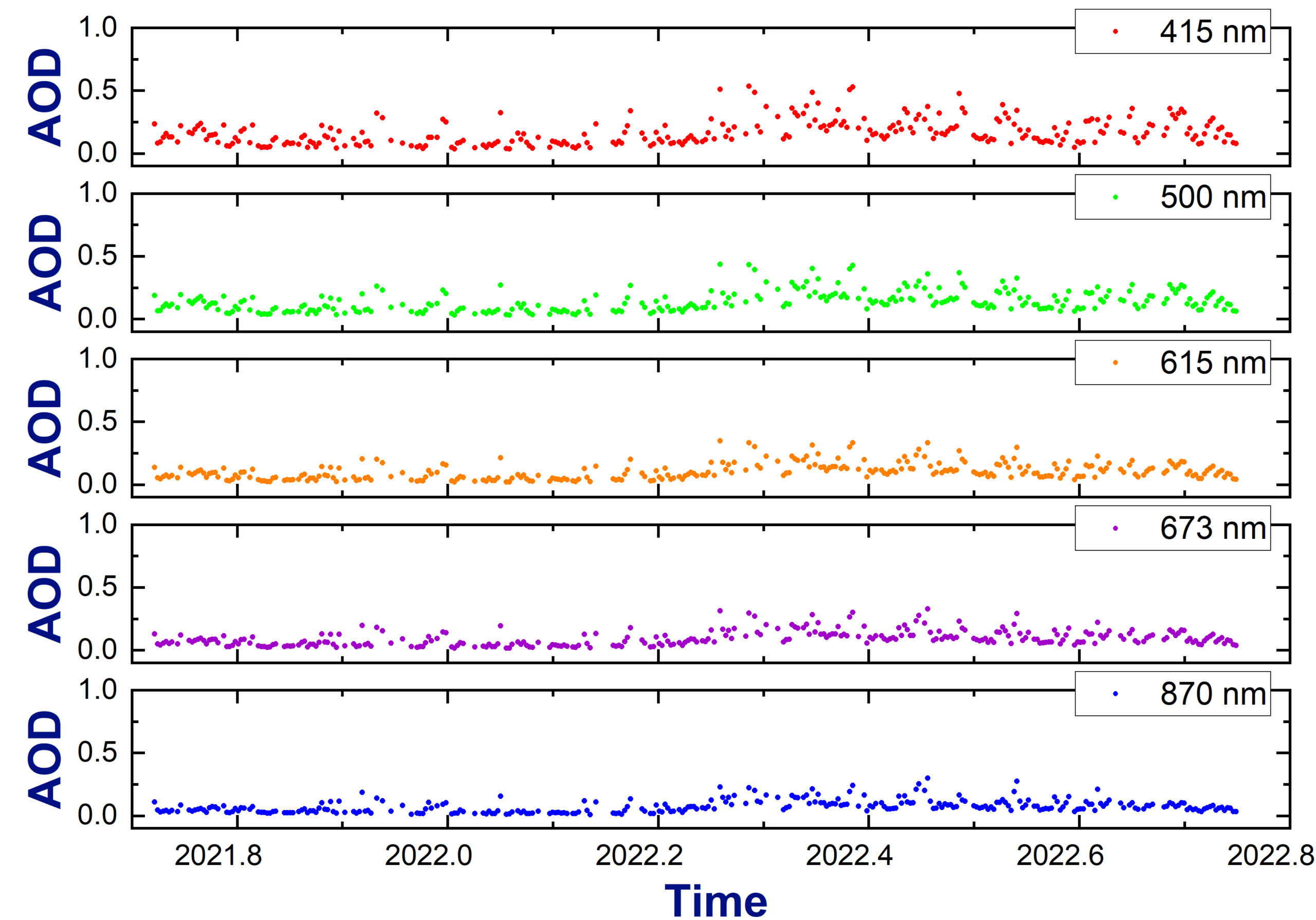Aerosol Optical Depth Best Estimate Data Produced for TRACER Campaign
Published: 8 September 2025

Aerosol Optical Depth Best Estimate 5-Channel (AODBE5CH) production data are now available for the 2021–2022 TRacking Aerosol Convection interactions ExpeRiment (TRACER) in the Houston, Texas, area.
Scientists can use the AODBE5CH value-added product (VAP) to analyze the variability of aerosol loading over multiple time scales and to demonstrate the importance of this variability in process-oriented studies.
AODBE5CH merges individual AODs from colocated Atmospheric Radiation Measurement (ARM) User Facility instruments to produce a high-quality, nearly continuous record of AOD best estimates (also known as combined AODs) at five wavelengths: 415, 500, 615, 673, and 870 nanometers. In addition, AODBE5CH provides wavelength-dependent uncertainty assessments of the combined AODs.
For the TRACER field campaign, AODBE5CH generated combined AODs from individual spectrally resolved AODs provided by three instruments at the ARM Mobile Facility site in La Porte, Texas: the multifilter rotating shadowband radiometer (MFRSR), Cimel sunphotometer (CSPHOT), and a new addition to AODBE5CH, the shortwave array spectroradiometer–hemispheric (SASHe). The generation of the combined AODs involves spectral and temporal matching of the individual AODs from each instrument. The output data are in netCDF format with one-minute temporal resolution.
SASHe AODs are expected to enhance the quality of AODBE5CH data and improve their temporal continuity and coverage, but they are currently limited in availability compared with AODs from MFRSRs, CSPHOTs, and ARM normal incidence multifilter radiometers. Thus, at this time, there are no plans to use available SASHe AODs to reprocess previously generated AODBE5CH data.
Additional information about the VAP, including the technical report, is available on the AODBE web page.
Access the new AODBE5CH production data for TRACER in the ARM Data Center. (To download the data, first create an ARM account.)
For questions or to provide feedback, please email ARM translator John Shilling, lead developer Gabriel Gibler, or VAP contact Evgueni Kassianov.
Data can be referenced as doi:10.5439/1885158.
Keep up with the Atmospheric Observer
Updates on ARM news, events, and opportunities delivered to your inbox
ARM User Profile
ARM welcomes users from all institutions and nations. A free ARM user account is needed to access ARM data.


















